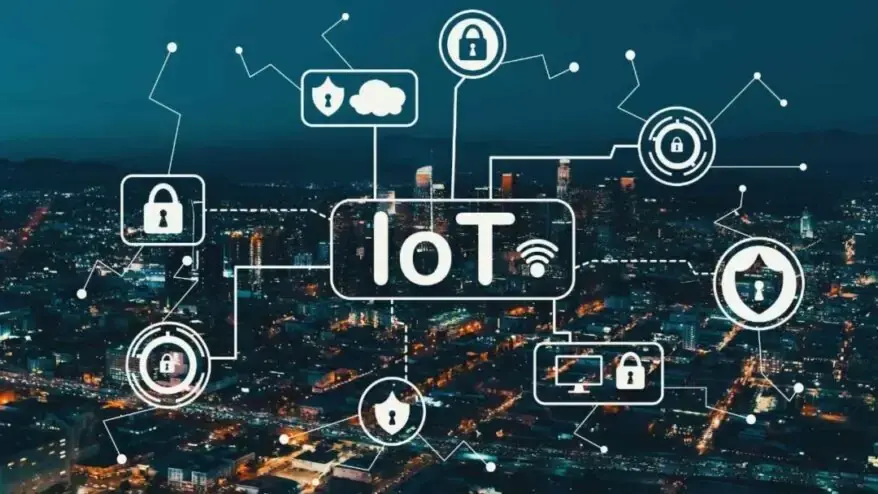What is IoT? Understanding the Internet of Things!
The Internet of Things is now seen more often in today’s world. It is also reshaping how we use tech and connect with the world around us. This writing explores the Internet of Things. It says what it is and how we use it in various fields. It also talks about safety problems and what it means for companies.
Understanding the Internet of Things
The Internet of Things is a big change. Actually, it links devices using the internet. In fact, these devices talk to each other and give information on their own. Also, it has changed how we use technology and will greatly affect businesses and our daily lives.
What is IoT, and How Does It Work?
Exploring the Basics
The Internet of Things is a system of everyday objects. Particularly, they have sensors, programs, and connections that let them gather and send information. Also, these things can be anything from home devices to factory machines. Indeed, they all link to the internet, which lets them share information instantly.
Internet of Things devices work because they have sensors. In fact, these sensors notice changes around them. Then, they make things happen based on set instructions. When these systems get and check information fast, they can act alone and work better in different cases.
The Internet of Things is used in many ways. Basically, it helps with smart cities, watches over health, keeps track of the environment, and improves how supplies move. This technology is flexible, so it helps find new ways to solve tricky issues.
Understanding IoT Device Functionality
Internet devices gather data as they run. Actually, this data is used to do tasks automatically. It improves how things work and helps predict when repairs are needed.
The system connects devices. It allows information to flow easily and keeps communication safe. This communication occurs between sensors and other parts. With so many devices online, the Internet of Things has vast potential.
Smart thermostats change temperatures depending on if people are there. Also, industrial sensors make manufacturing better. Internet of Things technologies are changing how we deal with the world. Also, devices like smart speakers can talk to each other. This shows how much things are changing.
Applications in Real-world Scenarios
The good things about the Internet of Things are more than just making life easier. They clearly help with efficiency, saving money, and protecting the environment. With sensors, companies improve how they work. They track where things are. They use information to decide what to do.

Also, devices connected to the Internet let you watch and control things from afar. This helps handle resources well and make processes better without people doing it. This connected group of smart things is changing how industries will do their jobs. It will change how they make products, move items, help people, and grow food.
The field grows and gets better using computer intelligence and learning machines. These tools let systems look at hard data, guess what will happen, and change when things are new. This makes it easier to automate tasks and improve how things work.
Benefits and Applications
Enhancing Efficiency with Industrial Internet of Things
IIoT uses IoT in factories, shipping, and power systems. It connects machines and sensors. This lets people watch things as they happen, fix problems before they start, and use resources well.
Using IIoT helps businesses work better, stop breakdowns with early fixes, and make more goods. Companies can use data to make work better, cut waste, and compete around the world.
Smart sensors watch how machines work. IIoT uses data to guess when repairs are needed. This changes old industries and starts a new industrial age. Putting these technologies together will greatly change how things are made, shipped, and powered.
Smart Home Devices
Smart home gadgets are now everywhere in homes, giving comfort, saving energy, and making homes safer. Also, smart thermostats change heat based on room use. Furthermore, lights that connect can be switched with voices. In the end, the Internet of Things has shifted how we use our homes.

Smart home devices use sensors to gather details about user preferences, actions, and environment. This information helps change settings to suit each person and automate daily tasks. Smart home devices connect without problems and operate in a smart, automated manner. Due to this, people find their homes more relaxing, simpler to manage, and safer. Ultimately, homes become more efficient and help the environment.
Using Internet of Things tech in smart home devices expands the market for these items. Also, more interconnected products are becoming typical. As smart devices improve their connections and get smarter, they enhance daily life. Therefore, people enjoy a better standard of living.
Improving Business Operations with Enterprise Internet of Things
Business IoT helps work. It makes more things and finds new ways. When companies use IoT devices at work, they can fix supply chains, track items, and help customers.
Using the internet with work devices lets companies use data to decide well. It also helps them improve work and talk to customers. When companies use these gadgets, they can learn how they work, find improvements, and stay up-to-date.Internet of Things tools for business are used in stores, hospitals, shipping, and deliveries. They offer help made just for certain situations. These tools can grow and adapt, so businesses can stay current, use resources wisely, and become digital companies.
Security and Privacy Concerns
Ensuring Data Protection in Technologies

A main problem with using Internet of Things is keeping data safe and private on connected devices. These devices make and send a lot of data. People are increasingly concerned about protecting key information from online threats and unauthorized access.
Using strong encryption, secure authentication, and regular firmware updates is key to protecting data in these systems. When teams discuss safety openly and keep an eye on their gear, there’s a lower chance of data theft. Also, keeping unauthorized people out becomes simpler.
It is very important to follow data rules like GDPR and ISO/IEC 27001. This helps keep IoT data correct and protects people’s privacy. When companies work hard to protect data and use trustworthy methods, people will trust them. Then, personal details will stay safe
Security Measures for IoT Networks
We need to protect Internet of Things networks. This means blocking attacks, keeping data secure, and stopping unauthorized access. Businesses can make their IoT systems secure by using firewalls, tools that find intruders, and regular security updates.
Dividing networks, controlling access, and securing data transfers helps reduce dangers from Internet of Things devices and networks. Companies prevent computer problems and keep private details safe by:
- Dividing up information.
- Controlling what users can do.
- Keeping conversations private.
To keep IoT devices safe, check them a lot, learn about dangers, and make plans for problems. Businesses make things safer and keep devices working well if they quickly spot unusual things, learn what might cause harm, and fix problems fast.
Internet of Things and Future Trends
Exploring Cloud Computing in Internet of Things

Cloud computing plays a crucial role in enabling the scalability, flexibility, and accessibility of Internet of Things applications. Using cloud setups, devices can keep, work with, and look at lots of data instantly. This helps them connect easily and handle data well.
Using cloud services with Internet of Things systems helps process data better. It makes connected devices faster and more adaptable. Also, cloud computing lets IoT systems use complex analysis, artificial intelligence, and machine learning. This helps to find important information and make smart choices.
More people are using Internet of Things tech, so we will need more cloud tools. These tools help keep data, do math, and link devices. Cloud computing lets companies discover fresh ideas, improve their work, and succeed in a world with more connections.
Utilizing AI and Machine Learning in IoT Systems
AI helps IoT devices do things by themselves, learn, and guess what will happen. These devices look at information to find patterns. They also get better from past actions. Overall, AI helps IoT apps improve, predict, and decide things on their own.

Machine learning helps IoT devices change as their surroundings change. It lets them guess what users will do and make their performance better based on current data. AI in IoT systems can make things just for you. They can use things without wasting them. They can also make things better in many fields.
The merging of AI, machine learning, and Internet of Things technologies is creating new opportunities. In effect, these technologies are redefining intelligent automation, data analytics, and predictive maintenance.
Moreover, as Internet of Things ecosystems grow more interconnected and smart, they enhance each other. In conclusion, this synergy opens up new paths for innovation, efficiency, and growth in the digital era.
FAQ
Q: What is Internet of Things?
A: The Internet of Things is a setup of connected devices. These devices use the internet to gather and give out data. They do this without needing people to talk to each other or to computers.
Q: How does it work?
A: IoT devices use sensors to see what is happening around them. They gather information and send it over the internet to other devices or programs. This helps make things happen automatically and work better.
Q: What are the benefits of Internet of Things ?
A: The Internet of Things has many good points. It can make things work better and help you decide wisely by looking at data. It also helps you get more done and save money. You can even make new ways to do business and earn money.
Q: How it is related to security systems?
A: Internet-connected devices frequently help secure things, like homes. They watch over and keep your property safe. But, worries about keeping information private and weaknesses in these devices have caused problems that must be fixed.
Q: How can Internet of Things be utilized for business purposes?
A: Using connected devices in business can make things work better. It can make things easier, give customers better experiences, and help know when machines need repair. This can lead to new ways to make money with new services and products.
Q: How does the Internet of Things work on an industrial scale?
A: Connecting tools and sensors to the internet in factories lets people see how machines work. It also helps them know where items are and improve how things are made. This allows people to repair issues before they start, so everything runs better.
Q: What is the relationship between AI and Internet of Things?
A: AI and the Internet of Things often work together to make Internet of Things devices better. AI can check data from these tools to find patterns that help. It can guess what will happen next and then make its own choices.
References
Kasemsap, K. (2019). Internet of things and security perspectives. Securing the Internet of Things, 1-20. https://doi.org/10.4018/978-1-5225-9866-4.ch001
Routray, S. K. (2021). Deployment of narrowband internet of things. Research Anthology on Developing and Optimizing 5G Networks and the Impact on Society, 859-875. https://doi.org/10.4018/978-1-7998-7708-0.ch036







Considering the growing number of connected devices, how can businesses ensure reliable network infrastructure and data security when implementing IoT solutions?
Great insight
Thanks for your comment!
Keep visiting entechonline.com to read the latest news and articles on Science, Technology, Engineering and Mathematics STEM. ENTECH Online is more than just a magazine; it’s a gateway to a world of possibilities for teenagers passionate about Science, Technology, Engineering, and Mathematics (STEM).
Nice Article 👏
Thanks for your comment!
Keep visiting entechonline.com to read the latest news and articles on Science, Technology, Engineering and Mathematics STEM. ENTECH Online is more than just a magazine; it’s a gateway to a world of possibilities for teenagers passionate about Science, Technology, Engineering, and Mathematics (STEM).
I like this Article.Really helpful.
Thanks for your comment! ENTECH Online is more than just a magazine; it’s a gateway to a world of possibilities for teenagers passionate about Science, Technology, Engineering, and Mathematics (STEM).
Keep visiting entechonline.com to read the latest news and articles on Science, Technology, Engineering and Mathematics STEM.
Good for students.
Thanks for your comment, keep visiting entechonline.com for more articles related to your interests.
Nice 🙂
Thanks for your comment, keep visiting entechonline.com for more articles related to your interests.
Good
Thanks for your comment, keep visiting entechonline.com for more articles related to your interests.
Good for beginners!
Thanks for your comment, keep visiting entechonline.com for more articles related to your interests.
Too much interesting!
Thanks for your comment, keep visiting entechonline.com for more articles related to your interests.